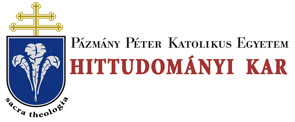Folia Theologica 15. (2004)
Szabolcs Anzelm Szuromi: Rules concerning bishops in the Decretales Pseudo-Isidorianae, especially the regulation on the death of bishops
RULES CONCERNING BISHOPS 153 sibility of burial in the foreground or hall of the church.34 This source also argues about the strict prohibition of any funeral under the altar. A real good example for the contemporary concept is the case of Pepin the Short (741-768). This Frankish King allowed himself to be buried in Saint Denis, before the gate of the church, on the belly, because he wanted to do penance for the sins of his father, Charles Martel (717-741).35 Moreover, we know about the Capitula Frisingensis (813),36 which in cap. III/30, excludes priests and male religious from the force of the funeral prohibition.37 The Council of Mainz was the particular council which established in 813 the new concept of the funeral discipline, and its text has been a source for the canonical collections of the classical age of canon law, for example for the Decretum Gratiani (1140). The Council of Mainz listed those persons whose burial is permitted inside the church.38 The old regulation which can be found for example in the Pseudo Isidorian Collection, gives a basic argument against any funeral under the altar, namely, that the altar is an exclusive place for the consecration of the Holy Eucharist, the real Body and Blood of Christ.39 40 The Council of Mainz allowed for the possibility of the burial there of bishops, abbots, and worthy presbyters or faithful, cf.: Nullus mortuus infra ecclesiam sepeliatur, nisi episcopi, aut abbates, aut digni presbiteri, uel fideles laici.i0 Naturally, the Roman Pope has a remarkable status among the diocesan bishops, and if he dies in Rome, his 34 Prohibendum etiam secundum maiorum instituta, ut in ecclesia nullatenus sepeliantur, sed in atrio aut in porticu aut abdera ecclesiae. Infra ecclesiam uero aut prope altare, ubi corpus domini et sanguis conficitur, nullatenus habeat licentiam sepeliendi. MGH Capit, episc. 1. 153. 35 Cf. MAROSI, E. (ed.), A középkori művészet történetének olvasókönyve, Budapest 1997. 100., 342/ note 113. 36 FERME, Introduzione alla storia del diritto canonico, 128. 37 In domo dei corpora mortuorum non sepeliantur nisi sacerdotum et religiosorum uirorum. MGH Capit, episc. 3. 229. 38 Nullus mortuus infra ecclesiam sepeliatur, nisi episcopi aut abbates aut digni presbyteri uel fideles laici. MGH Cone. II/l. 272. 39 C. 13 q. 2 c. 15. Prohibendum est etiam secundum maiorum instituta, ut in ecclesia nullatenus sepelientur, sed in atrio, aut in porticu, aut in exedris ecclesiae. Infra ecclesiam uero, aut prope altare, ubi corpus Domini et sanguis conficitur, nullatenus sepeliantur. FRIEDBERG I. col. 726. 40 C. 13 q. 2 c. 18: FRIEDBERG I. col. 727.
